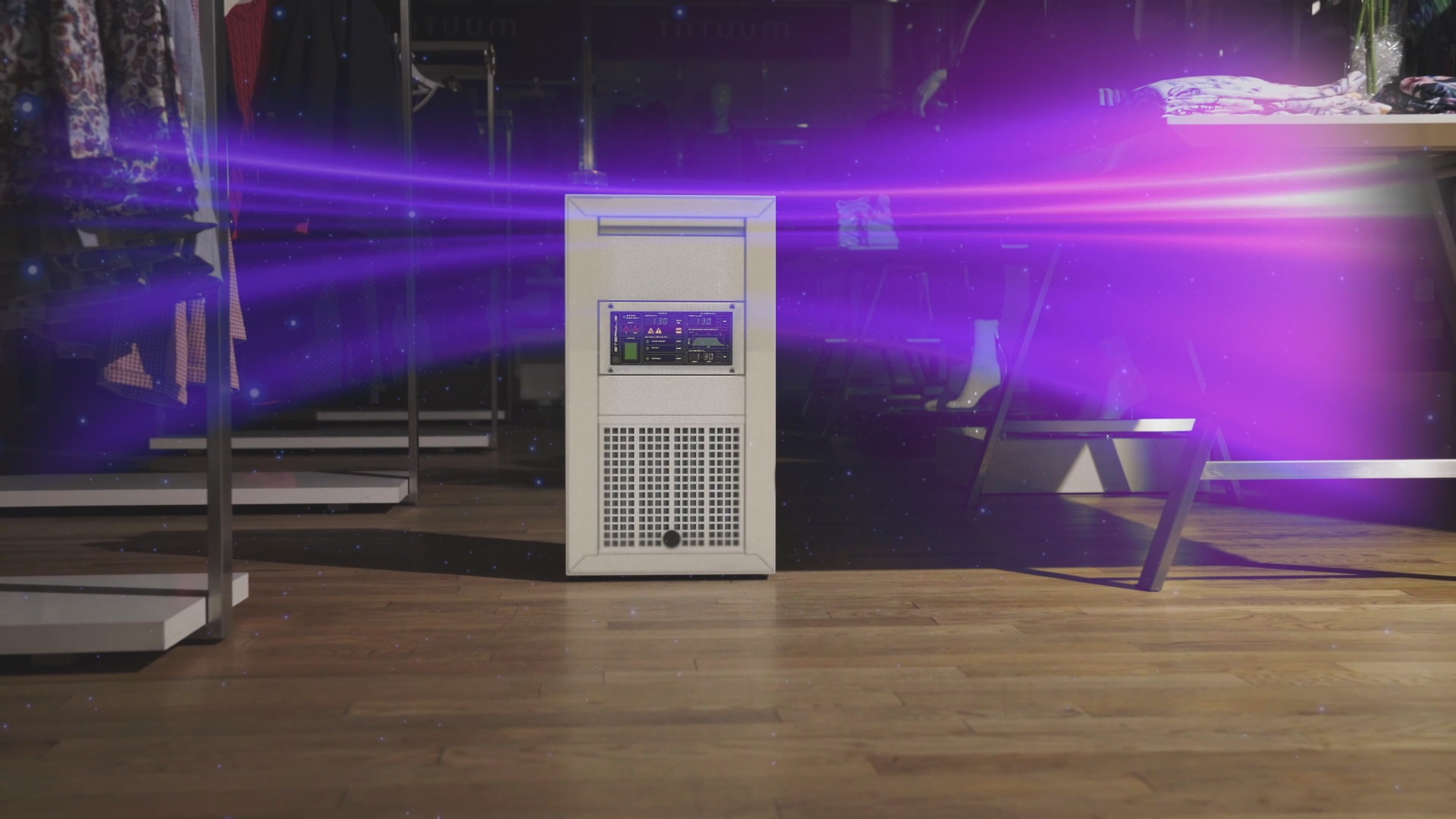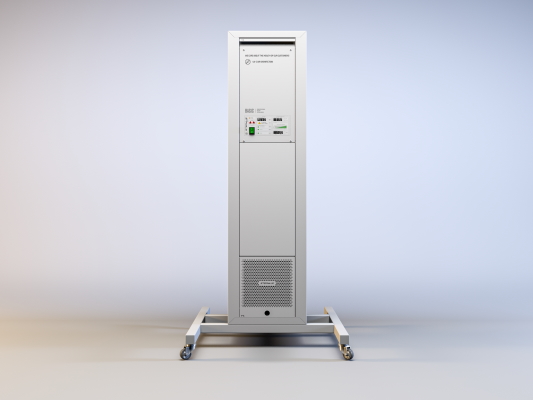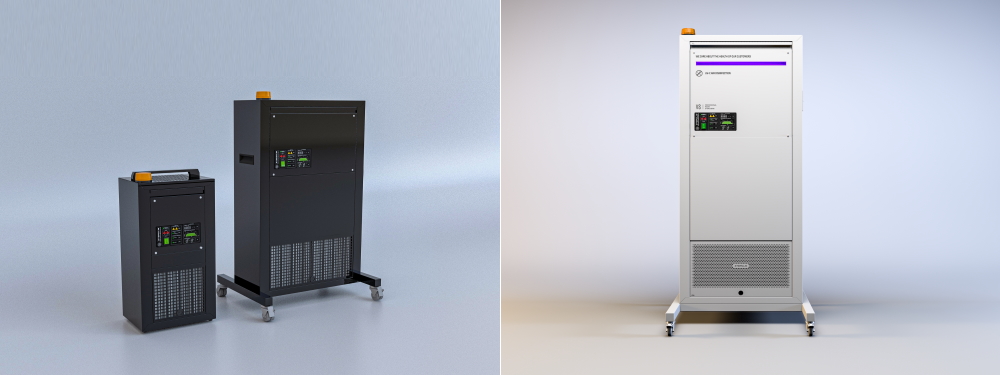
SARS CoV-2 is highly sensitive to UV-C radiation
According to a study conducted by a multidisciplinary team of Italian scientists, a UV-C dose of just 3.7 mJ/cm2 (37J/m2) was sufficient to achieve a 99.9 percent reduction in SARS-CoV-2 coronavirus
The study was performed at a virus density comparable to that observed in SARS-CoV-2 infection. A multidisciplinary team of Italian physicians, diagnosticians and physicists, indicates that, in the context of the results of their study, non-contact disinfection technologies are highly desirable. UV radiation, in particular UV-C (200 – 280 nanometres), is one of the most reliable and widely accepted solutions
It should be noted that the maximum doses used in STERYLIS devices range from 575 to 93 J/m2.
STERYLIS also allows for sterilisation of surfaces, including those hard to reach, and air. It emits, in standard settings, doses of ozone up to 7 ppm, as they give a quick effect. However, it requires leaving the rooms for the time of sterilization and using the deozonization process afterwards (according to recommendations of the National Institute of Hygiene, every device using ozone should be equipped with deozonizer).
STERYLIS has, depending on the model, several methods of air purification:
BASIC (UV-C) models:
- carbon filter cleaning
- disinfection of air with UV-C radiation (you can stay indoors during the process).

VS and ULTRA models (UV-C + ozone):
- carbon filter cleaning
- disinfection of air with UV-C radiation (you can stay indoors during the process)
- sterilisation with ozone O3 (leave the room during the process)
- deozonation – the accelerated decay of O3 (ozone) to O2, or atmospheric oxygen.
The difference between STERYLIS VS and ULTRA models lies in the significantly higher power of ozone generators and UV-C radiators. This allows you to use ULTRA models effectively in rooms with very large cubic capacity.

The difference between STERYLIS VS and ULTRA models lies in the significantly higher power of ozone generators and UV-C radiators. This allows you to use ULTRA models effectively in rooms with very large cubic capacity.
STERYLIS uses well-known and repeatedly tested methods of disinfection and sterilisation. Studies on the sensitivity of the coronavirus family to different varieties of UV (ultraviolet) radiation began back in the 1970s. They showed a high sensitivity of coronaviruses to UV radiation, especially UV-C, i.e. ultraviolet radiation with a wavelength between 100 and 280 nm (nanometres).
SARS-CoV-2 – responsible for the current pandemic – is one of the most UV-sensitive coronaviruses. The most effective in the fight against pathogens is radiation with a wavelength of 254 nm, which is used in all models of STERYLIS devices.
UV-C – LATEST RESEARCH IN THE CONTEXT OF THE SARS-cov-2 CORONAVIRUS:
1 Study by a multidisciplinary Italian team led by Andrea Bianco “UV-C irradiation is highly effective in inactivating and inhibiting SARS-CoV-2 replication”. With a virus density comparable to that observed in SARS-CoV-2 infection, a UV-C dose of just 3.7 mJ/cm2 (37J/m2) was sufficient to achieve 3-log inactivation, or 99.9 per cent reduction.
- A comparison made in 2020 by Wladyslaw J. Kowalski, a US-based scientist of Polish origin and the world’s foremost expert on UV, summarises the results of research to date since 1978: https://www.researchgate.net/publication/339887436_2020_COVID-19_Coronavirus_Ultraviolet_Susceptibility
- Boston University – a team of US scientists has found that a dose of 5mJ/cm2 (50J/m2) can reduce the SARS-CoV-2 virus by 99%. https://www.researchsquare.com/article/rs-65742/v1.
OZONE: LATEST RESEARCH IN THE CONTEXT OF THE SARS-COV-2 CORONAVIRUS
The powerful antiseptic properties of ozone have been known for years. Recent research at Fujita Medical University in Toyake, Japan (2020) indicates that ozone concentrations as low as 0.05-0.1 ppm (parts per million) are sufficient to destroy coronavirus, but will take a long time. This concentration of ozone is not harmful to humans, but the process is slow. This ozone concentration can be programmed in the STERYLIS device.
